Bootes (Bhutesh)
Bootes, resembles the shape of a herdsman, when stars in this constellation are imaginarily connected, as per Indian mythology!
Where should I see…Coma Bernices and Canes Venatici, are the constellations, towards west of Bootes.
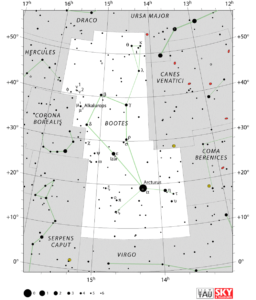 If you move your eyes towards east, you will see Bootes another constellation named Corona Borealis, Serpens Cauda and Hercules. In the North of Bootes, you will find Draco and Ursa Major while in south, you will find Virgo respectively. Bootes is halfway between celestial equator and North Pole, and so is fully part of Northern Hemisphere.
If you move your eyes towards east, you will see Bootes another constellation named Corona Borealis, Serpens Cauda and Hercules. In the North of Bootes, you will find Draco and Ursa Major while in south, you will find Virgo respectively. Bootes is halfway between celestial equator and North Pole, and so is fully part of Northern Hemisphere.
It covers up 907 square degree area of the sky. Area wise it is 13th largest constellation in the sky.
When and What can I see…We can gaze at this herdsman shape of Bootes constellation from December to
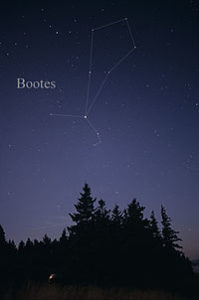
August, as seen from India.
All you need is your naked eyes other than clear skies to see 151 stars of this constellations, as they are the one which are brighter than the lower limit of our naked eyes (i.e. 6.5 apparent magnitude) to see faintest stars. The brightest star of this constellation is Arcturus. It also has a hindu name, Svati which is also a Nakshatra (Lunar mansion)
Constellations are made up of single, binary (apparent and absolute), multiple and variable stars.
Out of total 151 stars of different types, here is the list of 20 brightest stars as per their nature:
| Binary / Multiple Star system | Variable Stars | Binary / Multiple and Variable Stars | Single stars |
| Muphrid | Arcturus | Seginus | – |
| Izar | Xuange | Alkalurops | 2 |
| – | Nekkar | 10 | |
| – | 1 | – | – |
| 2 | 4 | 12 | 2 |
In Hindu mythology, it is said that when Rishis and Philosophers first saw Bhutesh taramandal (Bootes constellation) which is named as 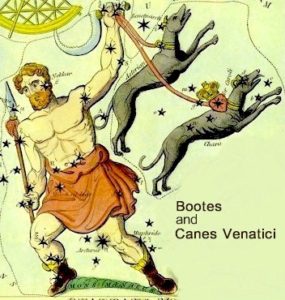 Bhutesh by them, actually looked like a shape of a herdsman. Actually, there are many stories associated with Bhutesh. But one of them is that, a bird called Chatak whose thirst is never left unsatisfied by any water resourses on Earth. During monsoon, he waits for water from Swati Nakshatra to satisfy his thirst.
Bhutesh by them, actually looked like a shape of a herdsman. Actually, there are many stories associated with Bhutesh. But one of them is that, a bird called Chatak whose thirst is never left unsatisfied by any water resourses on Earth. During monsoon, he waits for water from Swati Nakshatra to satisfy his thirst.
Deep Sky Objects…
 M38 or NGC 1912 || Open Star Cluster
M38 or NGC 1912 || Open Star Cluster
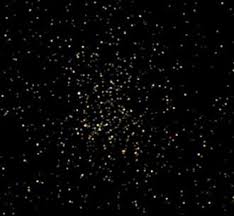 Bootes Dwarf Galaxy
Bootes Dwarf Galaxy
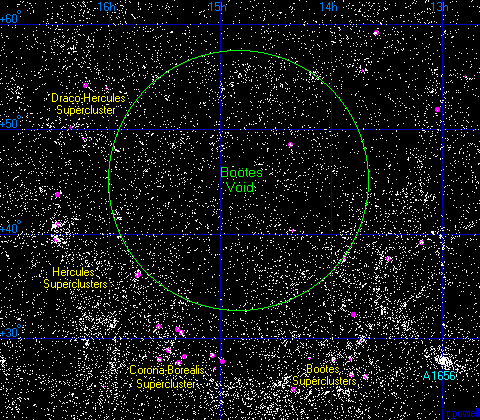 Bootes void || Spherical Region of space
Bootes void || Spherical Region of spaceAll the stars that we see naked eyes, all belong to our own, Milky way galaxy (Akash Ganga Tara Vishv). Bright stars can be seen naked eye and faint one through telescope. But the curtain of sky that we see in 2D is actually a huge universe we are talking about, with 3 dimension. There are many nebulous objects visible in every constellations. They differ widely by distances and nature. Like Emission Nebula, Reflecting Nebula, Absorption Nebula, Star Birth Nebula, Supernova Remnants (SNR) and Open Stars cluster which are within the disk of our own Milky Way galaxy. Globular cluster are also found, which are in the halo of our galaxy and some most distant objects like galaxies are also visible through telescope. Such objects are defined as “Deep Sky Objects”.
In this constellation there are 509 such different types of Deep Sky Objects observed. Below is the list of 20 brightest Deep Sky Objects:
| Galaxy | Open Cluster | Globular Cluster | Nebula | Supernova Remnant | ||
| Naked eye visibility | – | – | – | – | – | |
| Visible through Telescope | 19 | – | 1 | – | – | |
| 19 | – | 1 | – | – |
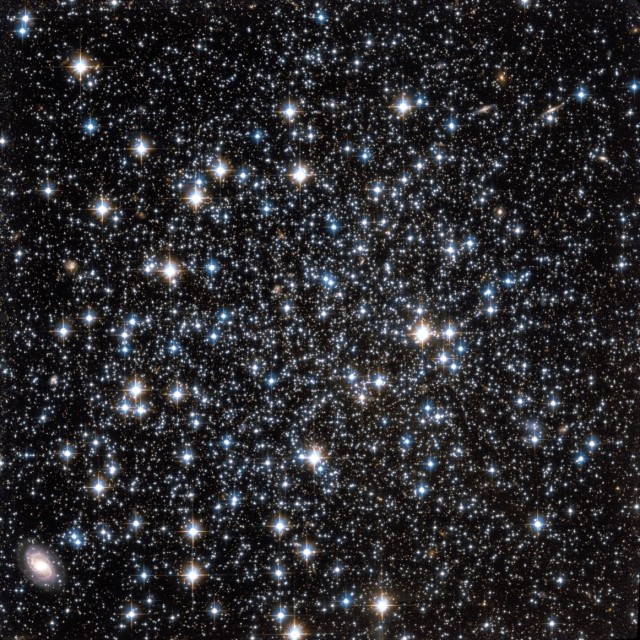 NGC 5466 || Globular Cluster
NGC 5466 || Globular Cluster
 Bootes Dwarf Galaxy
Bootes Dwarf Galaxy
 M38 or NGC 1912 || Open Star Cluster
M38 or NGC 1912 || Open Star Cluster

